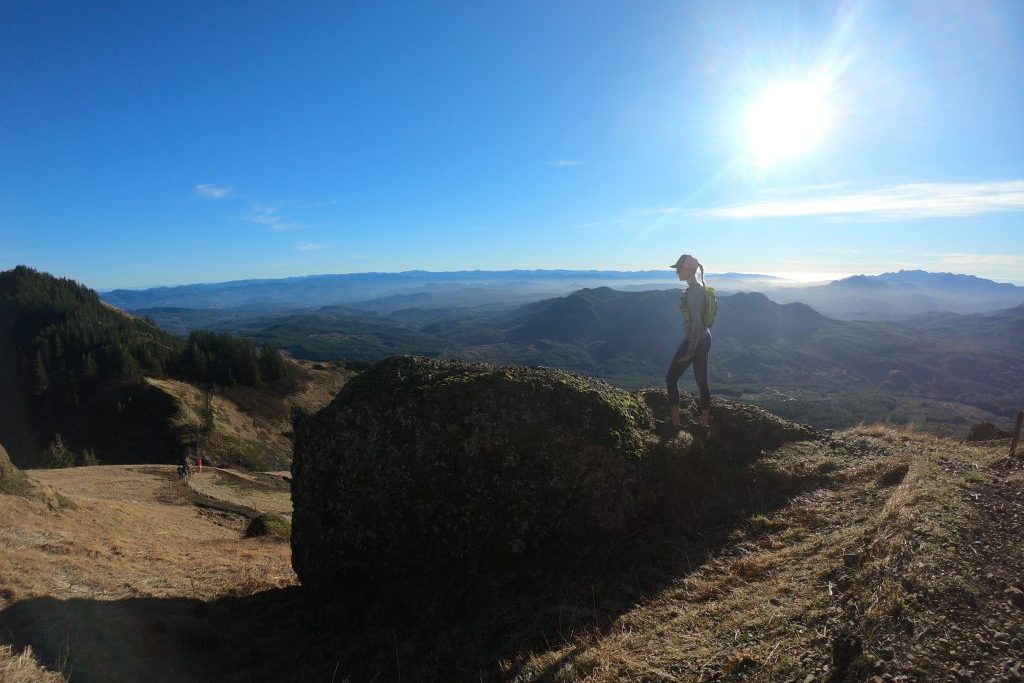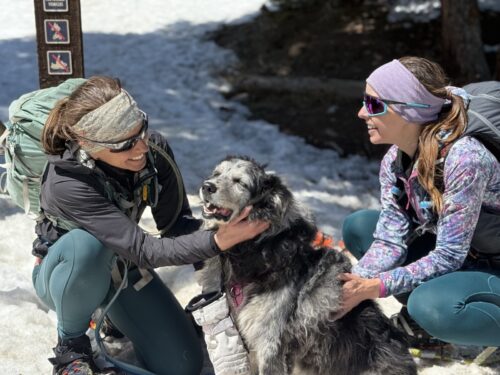Main Menu
Spring Training: Where to Start

Anna Wetzel is currently based in Portland, Oregon and prides herself as a “powered by plants” long-distance runner. She relocated from Chicago, Illinois last year to pursue her dreams of spending more time in nature and working with a population that shared similar interests to her. She works as an Orthopedic Physical Therapist for Bridgetown Physical Therapy and Training Studio in downtown Portland specializing in Orthopedics and the treatment of runners.
Share This Article!


By: Anna Wetzel
Now that everyone has their race calendars all marked up for spring and summer races, it’s time to start to thinking about training. Most of us understand that there needs to be an increase in miles, as well as an increase in hilly terrain, but it’s hard to connect at what time and what rate that this should take place. Often, we will increase our weekly miles as soon as possible and look for an online program that seems widely used and accepted. Although these are both fine things to do, what we need to consider is where we are at now and what our goals are. Just like a pair of fancy jeans online, they may look perfect on someone else, but when you try them on yourself they just don’t seem to fit you in the right places. The same goes for that online training plan, which the goal is intended to work for most people, but it certainly cannot tailor to your individual needs.

Disclosure statement: This article is not intended to be your solution for you training program because one-size fits all does not exist, but it IS intended to help guide your choices when navigating your 2018 training calendar. Talking to a local running coach and/or running physical therapist on how to individualize your training program is invaluable when tackling new goals. This is especially important if you are new to distance running, have a history of injury, or are doing something completely out of your comfort zone.
That being said, there are plenty of ways that you can evaluate a basic program structure to meet your own needs. Below is a list of things to consider when beginning a training cycle.
- How many miles are you running per week?
- What kind of running are you doing (pace/hills/ground surface)?
- How many days per week are your running now, and how many recovery days do you need?
- What other types of exercises do you like to do? Let’s find a way to keep this in your routine!
- What is your injury history (recent/recurrent injury, onset with a specific number of miles)?
Using the guidance of the questions above, I would then recommend that every runner have a base of 500 miles before pushing into higher intensity of training. Yes, that is a lot of miles, but if you have been running for say a 1-2 years most have achieved that. This essentially means don’t go overboard in adding multiple variables in if you are still relatively new to running. In fact, it is recommended that novice runners slowly increase their miles and perform almost all of their runs at conversation pace (which is fairly low intensity; pro tip: make sure you can sing the alphabet!). So, if you have yet to achieve your base and you have a race coming up, make sure that you allow a longer training cycle to give your body time to adapt. As of now, current literature still shows that the 10% rule of mileage increase each week stands, so make sure to account for this in determining the length of your program.
Once you have completed your 500 miles of base training and have gotten a few races under your belt, you can then consider adding in some more technical training. The first layer to add in would be your strength training. Strength training consists of tempo runs, hill training, fartleks, and run specific lifting/body weight exercises. The definition of a tempo run is a threshold run that is essentially equivalent to all out race pace over one hour or that is at or below your 10k pace. Tempo runs are usually performed for 20-30 minutes, but could be held for a full hour if needed. Tempo runs are key to performance, but are often hard for novice runners to integrate. Fartleks are “play runs” that consist of a fast bout of running followed by rest with no defined intervals. Think of this as sprinting between light posts on a run and slow jogging in between. Fartleks are easy to integrate into your routine and decrease injury risk by decreasing repetitive stress. You can play around with terrain, pace, recovery, etc. and really have the freedom to do just about anything, which is awesome! Next, formal strength training consists of RUNNING SPECIFIC exercises that simulate movements that you do in running. These should be performed 1 to 2x/week. Last, hills can be anything from hill repeats, to hilly run loops, or stair circuits (just make sure to not do too much too soon). With hills consider taking recovery on flats and try not to overdo downhill running (although it’s exhilarating, I know), it takes a lot of breaking force on the body and can lead to overuse very soon.

You have successfully achieved base miles and added tempo/fartlek/strength/hills into your next cycle without injury, what’s next? Let’s pump up the speed! Speed work is super valuable to improving performance, but also can increase injury risk if the intervals are too short and quick and not added when the body is ready. I know the very word speed scares a lot of distance runners, including myself, but it is absolutely necessary to help you sprint into that finish line feeling strong. So yes, even though you are a trail runner, finding an outdoor track is not a bad idea to help you propel your performance to the next level. What’s the best track workout? Well that completely depends on your race goals, but generally interval runs should be kept longer for distance (trail ultra) runners to prevent injury (800m-2000m) and be kept between aerobic and anaerobic (i.e: not conversation pace and not all out). Do not add speed in when dealing with an injury.
As a mentioned above in things to ask yourself, it’s important to consider how many days you like to run per week and if you like to do other exercises when designing a program. When training for an event, it is key to get specificity to your workout. This means similar terrain, similar grade, similar distance, etc. Thus, more running makes you better at running. I say that with grain of salt as a physical therapist because I know that often taking out things we like to do or cross training can lead to injury from overuse of the same muscle group. So, although your rock climbing will not necessarily make you better at running, it can help keep you happy with training and keep your overall fitness level up while loading different muscles in your body. Make sure to find days in your program to do the other things you love whether it be climbing, dancing, cycling, swimming, or anything else your heart desires! Keep the overall effort level low because any hard intensity workouts will labor your body and subsequently increase the risk of overuse during your training cycle.

Next, we have to start thinking about the quantity of training sessions per week or the efforts. It it is generally recommended to perform 2 to 4 efforts per week while training. An effort is anything that is a fast or hard workout, as well as your long run. Also, cross training and non-running sports should be counted as efforts, especially if they push into that “harder” zone. So easy, conversational pace runs can be left out, but any tempo, track, fartlek, long run, and cross training activities need to be considered. Yes, this means yoga too (more specifically a vinyasa flow or power yoga versus yin or restorative yoga). Thus, when I say leave the things you love in, it is to help keep you satisfied with your training, but this means you might need to cut a day out of your running or keep more of your runs “easy” to make sure to not push your efforts too high. Try to minimize the amount of hard efforts that you place back to back.
Another thing to consider is how to add these different variables in a training cycle. My general recommendation is to think of your training in 3 week blocks. Block number one, let’s focus on distance acquisition (i.e steadily increase your weekly long run). Block number two, let’s focus on some tempo running and hold your distance steady. Block number three, okay let’s push that distance again, but hold back on some of that tempo running. And so on…. The number one reason I see people in the clinic for injury is overuse. This means that people are just really trying to nail their training routines and they subsequently will add strength, speed, cross training, and distance all at the same time, but sooner rather than later you’re asking for an injury that could hold back your season. For your own program, follow what I detailed above and base it on what you’re doing NOW. If you currently run Wednesday, Saturday, Sunday and strength training Tuesday, Thursday; Keep that the same, but tweak your distance, intensity, and terrain SLOWLY to meet your race specific demands.

Finally, listen to your body, listen to your body, listen to your body. You should feel refreshed when you come back from a run, not fatigued and beaten up. You need to keep the majority of your runs lighter intensity (80%) and let them stay at a pace that keeps you loving running! If you feel the onset of an injury, pull back and cross train with something your body is used to or with an activity that is similar to running (elliptical, cycling, swimming, stair master). Give yourself a +/- 15-minute rule on your runs, so that if you are feeling strong you can push it or if tired you can pull back without guilt. And if you are just too tired to get out that door, it’s probably because you need a break. Don’t let those strict training plans override the signals that your body is giving you because ultimately learning to pick up on the often subtle red flags is the the sign of achieving expertise in running because it keeps you on your feet!
Here is a visual with staging yourself in your training plan:

- Novice runners may only stay in stage 1
- Most will achieve stage 1 or 2
- Performance for distance runners can benefit from pushing into intervals (stage 3), but caution with shorter intervals (stage 4; more for elite)
- You can do the race despite having pushed into higher phases
About the Author

Anna Wetzel is currently based in Portland, Oregon and prides herself as a “powered by plants” long-distance runner. She relocated from Chicago, Illinois last year to pursue her dreams of spending more time in nature and working with a population that shared similar interests to her. She works as an Orthopedic Physical Therapist for Bridgetown Physical Therapy and Training Studio in downtown Portland specializing in Orthopedics and the treatment of runners.
Share This Article!



















